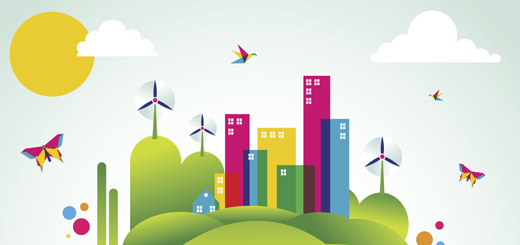![]()
The human brain responds to multiple stimuli, and color is one stimulus. Color naturally surrounds people in the trees, the sky, the sea—pretty much everywhere. The brain processes all these colors. It has a different way of making sense of every color it sees.
It’s a function that has served even the earliest humans on Earth. For example, a certain color means that a plant is poisonous, so these are plants you normally avoid. A dark sky means an impending torrential downpour. And when a mango is green, it means it’s not yet ripe compared to one that is bright yellow.
Color Psychology Is Everywhere
As you can see, nature has a way of telling people what to think of things depending on their color. Leaving the primitive years behind, people have used colors to become tools they can purposely manipulate to perform a particular function. Businesses now control color to make you feel a certain way. This is what color psychology is for. It’s the study of how colors affect people’s moods, perceptions, and behavior.
There is no single industry where the use of color is monopolized. In fact, it’s everywhere, although most people would relate it to the arts upfront. Remember Pixar’s movie “Inside Out“? That movie matches a specific color with a particular emotion. Joy is mainly yellow, Sadness is blue, Anger is red, Disgust is green, and Fear is purple.
Traffic and road rules are also a common application of color psychology. A red sign will often mean a warning, a caution. It also means the same in temperature controls. But when a restaurant uses the color red, it’s certainly not to warn you or make you stop. And this is where things get interesting.
Color Psychology in Business and Marketing
Of course, marketing can also capitalize on the use of color psychology. After all, making sales has everything to do with behavior and emotions. Start looking at the most common things that you use. You will realize how much thought and planning went into the design, including the color.
Take your bank cards as an example; there are many types. For one, a prepaid debit card and a platinum credit card offer you different payment features and flexibility. Obviously, banks will use these cards and colors to target diverse customers. You can expect that they also have different designs and colors.
Usually, premium credit cards use colors associated with luxuries like gold and silver. They can also be intense colors like blue that somehow reflect security. It’s not surprising that digital banks use playful colors like lilac for their products. Most of their customers are the younger generation, so, understandably, they use these colors to attract them.
Going back to the traffic sign example above, why would restaurants use red if it means caution or warning? It’s because it also signals hunger, a sign to refill. When your gas meter hits the red mark, it’s time to fill up the tank. Red is also code for appetite.
Does this mean restaurants can’t be color blue because red and blue are usually opposite one another? It’s both yes and no. Blue is typically related to appetite suppression, and you don’t want that when you own a restaurant. However, you can work in the color blue with food strategically.
Most low-calorie food products use blue packaging or have blue tags. It is also a fresh color which is why seafood restaurants use it.
How Important Is Color to Brands?
One function of color in marketing is to get attention. A number written in red on a white background usually means discounts and sales, which people are on the lookout for. A sale banner in black letters on a green background probably won’t have the same appeal.
Another marketing aspect that colors aid in is brand recall. Some brands have been highly successful at making people associate a color with them.
For example, you are in a new town and need coffee, so you drive around. Suppose your go-to coffee fix usually comes from Starbucks. In that case, you don’t have to see the mermaid logo to feel relief that you are minutes close to getting your coffee. Just seeing that particular hue of green will do the trick.
It’s not just Starbucks. There are actually plenty of brands out there that have successfully made colors work for them. Suppose you are currently in the process of coming up with a strong image for your business. You have to pay attention to the colors you use.
